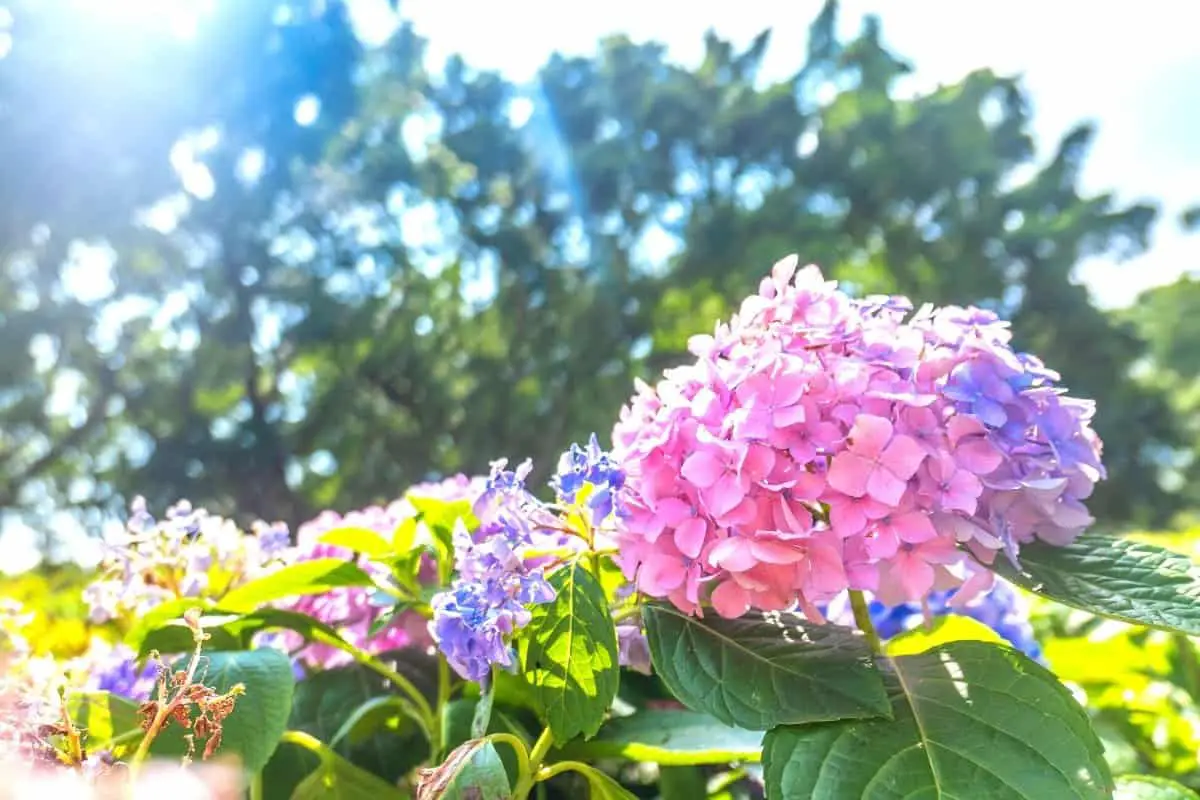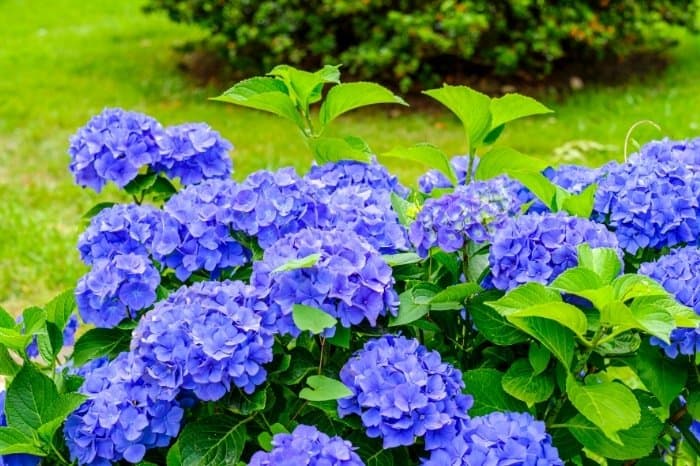Last Updated on January 19, 2023 by Urska
Have you wondered how to care for Hydrangeas in full sun? Can hydrangeas take full sun? Flowers are a natural source of happiness and beauty. Flowers are always appealing, and they bring a good aura to your garden environment. If you’re ready to add that extra sense of beauty to your garden, then you should go for hydrangeas. This kind of flower requires time and attention. Some people call hydrangeas a high-maintenance flower because of the extra work needed to make them bloom. With the right care, environment, and climate hydrangeas are easy to grow.
Hydrangeas are capable of covering your garden or home with its flowers when it blooms to full capacity. Summer is the best season for growing hydrangeas because of the level of sunlight needed to care for them. This species of flower takes no time to grow and sprout. Hydrangeas bloom during spring and last till summer. Planting this flower gives room for improving your gardening skills.
Before you lay those seeds underneath the soil, you need to make some important decisions. Decide on the best season to plant them, because they need to develop a good root system. Timing is everything. Plants are best planted in the morning or when the day is devoid of heat. Getting the right soil to plant your hydrangeas will help in producing beautiful flowers, and make your job easier.
Where To Plant Hydrangeas
This is one of the important decisions you need to make concerning planting a hydrangea flower. Deciding on where to plant hydrangea flowers comes after fixing a season and time for panting. Hydrangeas love the sun, especially if it is warm and not so hot. Plant your favorite flower where they are protected from the afternoon sun. A shade or an appropriate shelter is best for planting hydrangeas. This gives it enough sunlight and a natural water supply which is the rain.
Tips On How To Care For Hydrangeas In Full Sun
Hydrangeas can survive the heat of the full sun so long as they are not directly under the sun. This beautiful set of flowers require constant care for maturity. Hydrangeas have different species, so you can pick from the variety when you’re ready to start planting. There are several ways to care for your hydrangeas, but we will be focusing on the major ones.
-
Develop A Suitable Watering Routine
Every plant needs water to survive, but giving an overdose of water can kill them. Hydrangeas are thirsty plants that need water to keep the soil moist throughout the season. During the growing season, hydrangeas need adequate water. This should be done about 3 times a week to keep the roots strong and healthy. When the flowers begin to bloom, you can change your watering routine because the flowers would need more water. Use either a soaker hose or a beaded hose to water your hydrangeas.
-
Monitor The Soil
Before watering the flowers every day, check the soil to see how moist it is. Personally caring for your hydrangea is better than appointing someone to do it. This way you can monitor the water intake, the direction of sunlight, and moisture of the soil. Deep your hand in the soil to know the level of water your plant need. If it is dry, the hydrangea will need a good amount of water. But, if the soil is moist, you can do your normal watering routine.
XLUX Soil Moisture Meter, Plant Water Monitor, Soil Hygrometer Sensor for Gardening
-
Mulch Regularly
Mulching is important when it comes to planting any crop. Hydrangeas stay hydrated when you mulch regularly. An organic matter that can hold on to moisture is the best mulch for hydrangeas. Apply mulch twice during the growing season; in spring and summer. Mulching saves hydrangeas from suffering the heat of the sun. It produces some amount of water through evaporation to keep the plant cool. The roots and soil will be in perfect conditions if you mulch appropriately.
-
Use A Healthy Fertilizer
Fertilizers help in adding extra nutrients to your plant. But before you go ahead with any fertilizer, it is important to run a soil test first. Fertilization applications differ with the type of hydrangeas planted. Do not use the same application method for all hydrangeas, because they might get a bad reaction. Fertilizers can be a natural composition or a chemical composition. Either of the fertilizers can be used on the plant according to preference.
-
Protect Hydrangeas From Diseases And Pests
Plants are always exposed to all kinds of harsh environmental conditions. This is visible in their growth rate, flowers, and other parts of the plants. Hydrangeas need to be protected from the harm that may come to them. Pest and diseases can be identified if close attention is given to the plant. These harmful reactions are found on the leaves as powdery mildew or even a light spot. Avoid stressing your hydrangeas to prevent contact with pests and diseases. Some of the pests found include red spider mites, aphids, and leaf tiers.
-
Adequate Exposure To Sunlight
Hydrangeas need good exposure to sunlight to grow better. Covering it from sunlight or preventing adequate sunlight will only result in poor growth. Hydrangeas can take full sun, but the morning sun is the best for this species of flower. When dealing with hydrangeas, getting a shade is advised. This is due to the harsh heat provided by the afternoon sun most times. Hydrangeas should be allowed adequate sun for effective growth.
Conclusion On How To Care For Hydrangeas In Full Sun
At this point, you should know how best to care for hydrangeas whether or not you have one. Hydrangea care is not expensive and doesn’t take so much time. Take a good look at the interesting tips above and you will be growing the best hydrangea ever. Expose the hydrangeas to sunlight as much as you can, and provide them with adequate water.
We have come to the end of this article. Did you enjoy reading the interesting tips? Do you find them helpful? Will you apply them when caring for your hydrangeas? If so, please share your thoughts with us in the comment section below. You can also share this piece if find it helpful.
Tony Manhart is a passionate gardener who has been tending to gardens for over 20 years. He takes pride in creating beautiful outdoor spaces with plants, trees, and shrubs that can thrive in any environment. He loves to share his knowledge with others and has taught classes on gardening basics and advanced techniques. He is committed to sustainability, using natural and organic methods to create and maintain gardens. He also works with local organizations to create green spaces for communities. When he’s not gardening, Tony enjoys hiking, reading, and spending time with his family.




